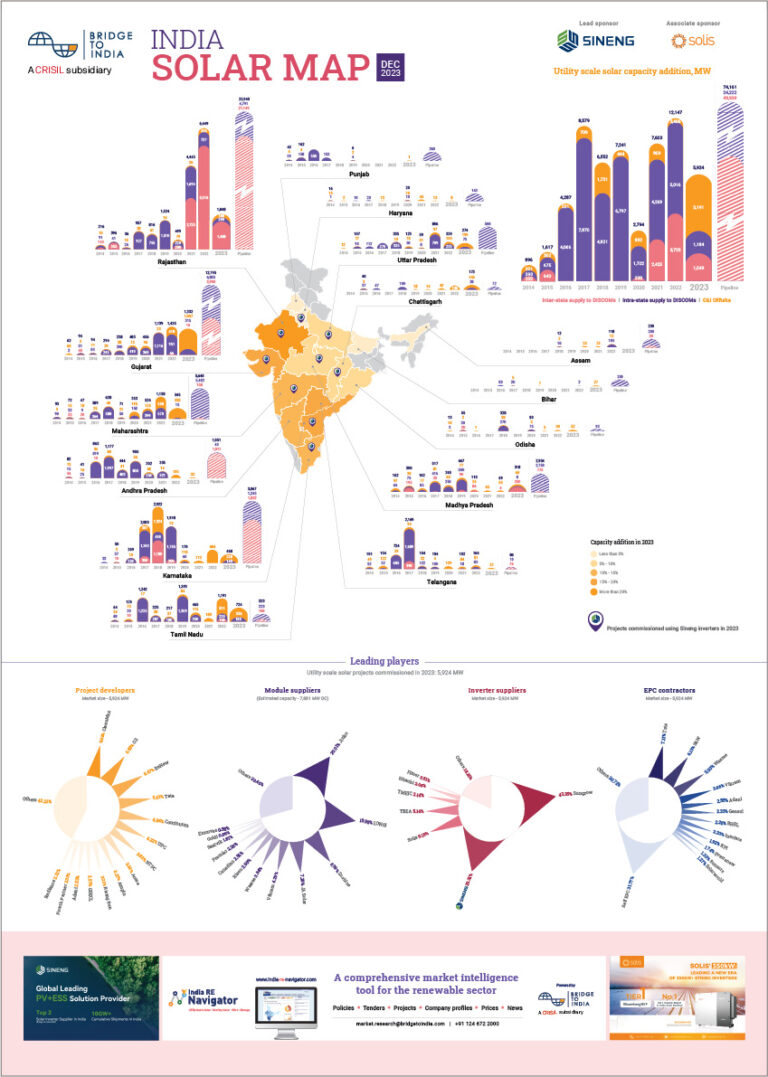Japan’s SoftBank is in the process of exiting Indian renewable sector, selling most of its 80% stake in SB Energy to CPPIB, the Canadian pension fund. Remaining 20% stake in the company would continue to be held by Bharti Enterprises. SB Energy has a SB Energy has a 4.9 GW portfolio including 3.5 GW capacity under development. As per news reports, the 80% equity stake has been valued at USD 525 million, subject to satisfactory due diligence and fulfilment of all bid conditions. Separately, Mahindra group, owner of a 1,222 MW solar project portfolio and a leading EPC player, has announced outright sale of the business to Brookfield for about USD 500 million.
- The two exits portend diminishing investment case for Indian renewables;
- Attractive fundamentals of the sector are diluted by growing policy uncertainty, execution risks, reluctance of utilities to sign PPAs, delayed payments and weakening growth prospects;
- While utilities and industrial investors turn conservative, financial investors are doubling down on the back of record low interest rates and strong ESG mandates;
Both exits make eminent sense. SoftBank, originally planning to set up 20 GW capacity in India, has found it very difficult to scale up the business in face of aggressive competition, low returns and execution challenges. The Indian renewable business was sub-scale and sub-optimal in its multi-billion USD technology-dominated global portfolio. The deal valuation, believed to be below book value of investments, points to SoftBank’s high-cost structure and extremity of the various challenges faced by the company. The sale process, delayed by several documentation and regulatory issues, is still ongoing.
The Mahindra group, meanwhile, has also taken a strategic call that the utility scale business was not attractive from a scale and profitability perspective. Interestingly, the group has decided to focus instead on residential rooftop solar and C&I renewable businesses, where it has marginal presence right now. The management believes that it can build a more attractive B2C business with its strong consumer brand and distribution reach.
Historically, most large M&A transactions in the sector have been motivated by a desire to churn capital and release money for further investments (see table below). In contrast, exits of SoftBank and Mahindra portend diminishing investment case for Indian renewables.
Table: Notable renewable sector exits

Source: BRIDGE TO INDIA research
Notes: The data excludes joint-venture transactions. Portfolio size includes projects under construction.
Leading global and Indian investors have poured into the sector attracted by promises of government support, huge growth prospects and quasi-sovereign offtake. But the reality is marred by growing policy uncertainty, execution risks, reluctance of utilities to sign PPAs, delayed payments, weakening growth and flagging risk-adjusted returns. Intense bidding and falling tariffs have only exacerbated the pain.
And yet while utilities and industrial investors retreat from the sector, financial investors – pension funds, sovereign wealth funds, private equity and infrastructure funds – continue to pile into the sector. For CPPIB, SB Energy acquisition would be their third major investment in Indian renewables after a USD 391 million investment in ReNew and a USD 600 million JV with Piramal group for setting up a renewable INVIT. Brookfield, a leading global owner of renewable assets, is also hungry for more assets. After acquiring 300 MW of operational assets from SunEdison in 2018, the fund manager has made bolt-on acquisitions of Axis Energy and Emami Power (total 253 MW) besides becoming active in the primary market.
Global liquidity pools are currently overflowing on the back of record-low interest rates and strong ESG mandates. But such capital can be fickle and it is important that the government heeds demands of investors before events turn sour.












